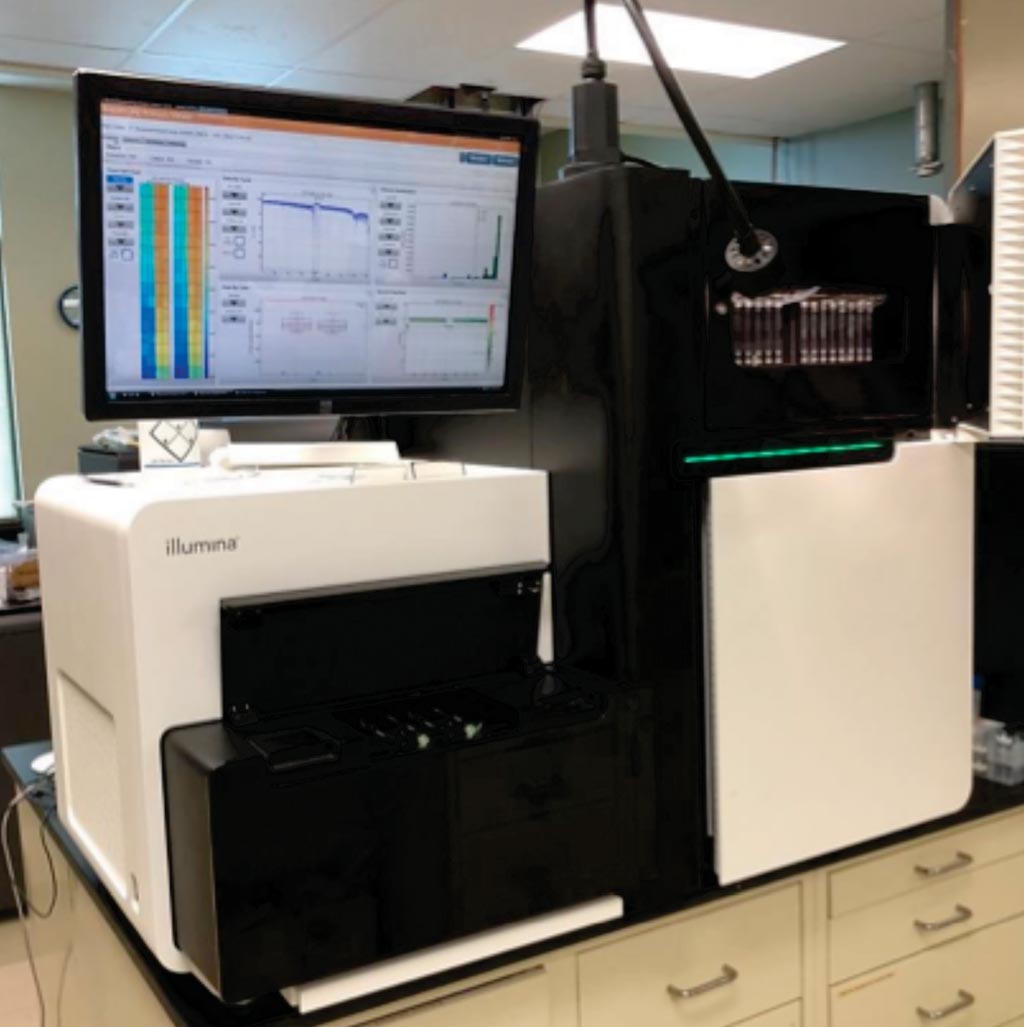Fusion Genes Diagnosis Uses Targeted RNA Sequencing
By LabMedica International staff writers
Posted on 10 Apr 2019
Chromosomal rearrangements that juxtapose two different genes together can form a fusion gene. Fusion genes play a causal role in tumorigenesis, accounting for ~20% of human cancer morbidity. However, the prevalence of fusion genes varies widely across different cancers, and many fusion genes are specific to certain cancer sub-types.Posted on 10 Apr 2019
Precise fusion gene diagnosis can also inform subsequent therapeutic treatment, with several drugs having been successfully developed to inhibit fusion genes. Fusion gene diagnosis can also predict prognosis, patient survival and treatment response. Fluorescence in situ hybridization (FISH) and quantitative real-time polymerase chain reaction (RT-PCR) methods have been predominantly used for fusion gene diagnosis.

Image: The HiSeq 2500 sequencing system offers unprecedented output (Photo courtesy of the University of Delaware).
Scientists at the Garvan Institute of Medical Research (Sydney, Australia) and their colleagues established that fusion gene detection with targeted RNAseq is both sensitive and quantitative by optimizing laboratory and bioinformatic variables using spike-in standards and cell lines. Next, they analyzed a clinical patient cohort and improve the overall fusion gene diagnostic rate from 63% with conventional approaches to 76% with targeted RNAseq while demonstrating high concordance for patient samples with previous diagnoses. All libraries were sequenced on an Illumina HiSeq 2500 v4.0 platform.
The team tested their new method using clinical cancer patient samples, including samples from the Molecular Screening and Therapeutics (MoST) clinical trials, and discovered that their RNA analysis not only more accurately detected fusion genes previously identified with FISH analyses, but that it identified 20% more fusion genes that the FISH analyses missed.
Erin Heyer, PhD, the first author of the study, said, “The approach we've taken in our study is to wipe away the information about where the cancer is found, we take a broad view and just look at genes that are known to be involved in fusions across all cancer subtypes.” The study was published on March 27, 2019, in the journal Nature Communications.
Related Links:
Garvan Institute of Medical Research













